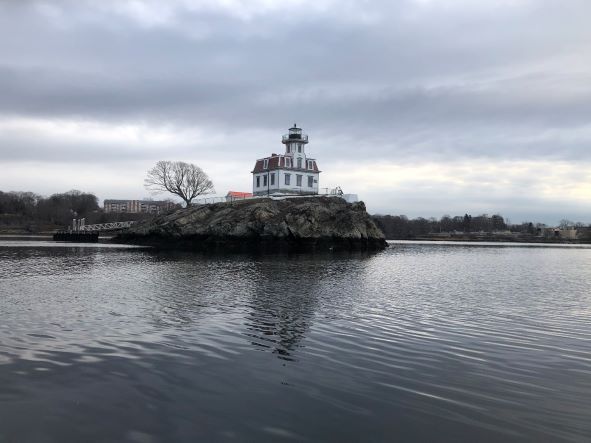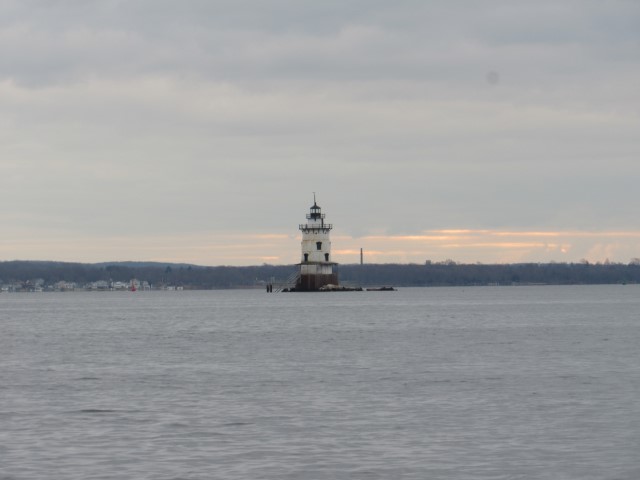February 5-11, 2023
Phillipsdale Landing
Sondes were swapped for routine maintenance on the morning of February 7th. The surface sonde continued to exhibit unusual buoyancy as began with the cold snap on February 3rd; for this week, approximately 27 hours of surface data were excluded from February 5th and 6th when the sonde was out of position. In addition the new surface sonde deployed on February 7th failed to log data, and so there is a data gap from this point through the end of the week. For these reasons, there are very limited surface data included in the following summary.
Weather conditions this week were mostly dry, with just 0.05 inches of rainfall on February 7th and trace rainfall on the 8th and 9th. Blackstone River flows continued to decline all week, but overall remain above the 18-year median flow rates for this time of year. Surface salinity from the limited data available early in the week averaged 5.0 ppt and ranged from 1.4 ppt to 9.3 ppt. At the bottom, salinity averaged 18.4 ppt and ranged from 3.6 ppt to 29.5 ppt. Temperatures at the surface (limited data) averaged 1.7°C, ranging -0.4°C – 2.9°C. At the bottom, temperatures averaged 3.8°C and ranged 0.5°C – 6.0°C.
Dissolved oxygen (DO) at Phillipsdale Landing remained above the hypoxia threshold of 2.9 mg/L throughout the week. Surface DO (limited data) averaged 13.0 mg/L and ranged 12.3 – 14.2 mg/L. Bottom DO concentrations averaged 11.0 mg/L and ranged from 9.2 mg/L to 14.2 mg/L. Chlorophyll readings remained low, averaging 1.5 ug/L at the surface (limited data) and 7.4 ug/L at the bottom. Maximum chlorophyll at the surface reached just 2.3 ug/L in this limited dataset. Chlorophyll at the bottom was elevated early in the week, though this does not appear to be related to phytoplankton activity as there were no concurrent changes to pH or DO; the spikes may have been related to the very cold temperatures or sediment interference. Please note that tidal fluctuations and Blackstone River flows greatly influence water column salinity, temperature, and DO at this location.
Bullock Reach
Bullock Reach sondes will be deployed later this spring for the 2023 monitoring season.


